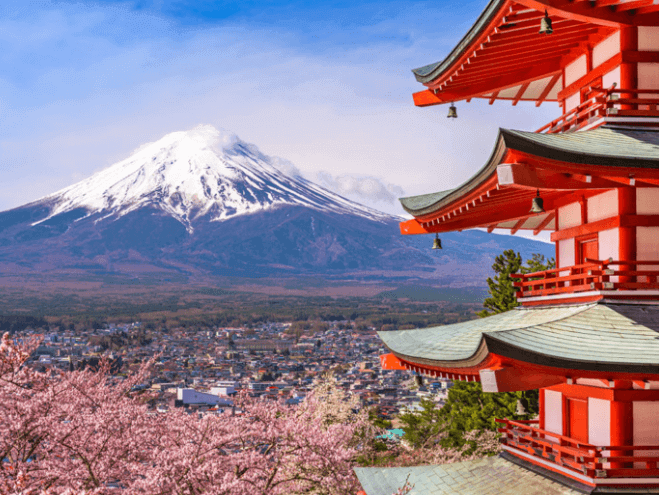The Japanese summer holidays, known as "Natsu Yasumi" (summer vacation), are a time of rich traditions, festivals, and activities. Typically falling between late July and late August, these holidays mark a time of relaxation and celebration for schoolchildren and their families. This article explores the general flow of the Japanese summer holidays, highlighting the events and customs that characterize them.
The end of the school year and the start of the holidays
The summer holidays officially begin after the end of the first school semester, around the end of July. Students in Japan, who follow a parallel school calendar, complete their final exams before receiving their report cards. End-of-semester ceremonies, often accompanied by speeches and award ceremonies, mark the beginning of this highly anticipated period.
Traditional festivals
Summer in Japan is synonymous with typical festivals, or "matsuri". These events are often linked to religious or cultural celebrations and attract many people. Among the most famous is the Gion Matsuri in Kyoto , which takes place throughout the month of July and ends with a large parade of decorated floats.
Another notable festival is the Tanabata Matsuri, celebrated on July 7, where Japanese people write their wishes on strips of colored paper and hang them on bamboo branches. Festivities include parades, fireworks, and street food stalls, creating a festive and convivial atmosphere.
Fireworks (Hanabi)
Fireworks, or "hanabi," are a staple of the Japanese summer holidays. These pyrotechnic displays light up the night sky and are often accompanied by local festivals. One of the largest fireworks shows is the Sumida River Fireworks Display in Tokyo , attracting millions of spectators each year.
The Japanese attend these events dressed in light cotton kimonos called " yukata," and enjoy food stalls offering traditional delicacies like yakitori (chicken skewers), takoyaki (octopus balls), and kakigori (shaved ice).
Travel and excursions
The summer holidays are also a great time for travel and excursions. Japanese families take advantage of this time to visit popular tourist destinations such as the seaside resorts of Okinawa, the mountains of Nagano, or theme parks such as Tokyo Disneyland and Universal Studios Japan in Osaka.
Trips to rural villages, where families can reconnect with nature and ancestral traditions, are also common. Activities such as hiking, camping, and swimming in rivers are popular pastimes during this summer period.
Holiday homework
Unlike many countries, Japanese students are not completely exempt from schoolwork during the summer holidays. They are often given holiday homework, called "natsu yasumi no shukudai." These assignments can include math exercises, required reading, science projects, and holiday journals where children document their summer activities.
Although these tasks may seem burdensome, they are intended to maintain a connection to learning and structure students' free time. Parents play an active role in helping their children plan and complete these assignments, strengthening family bonds and a sense of responsibility.
Obon: A time of commemoration
One of the most significant moments of the High Holidays is the celebration of Obon, a Buddhist festival honoring the spirits of ancestors. Obon usually occurs in mid-August and lasts for three days. Families often return to their hometowns to pay their respects to their ancestors by visiting graves, cleaning graves, and participating in memorial ceremonies.
Traditional Bon Odori dances are also a central part of Obon. These dances, performed in a circle to the sound of drums and folk songs, symbolize the reunion of the living and the spirits of the deceased. Floating lanterns, or "tōrō nagashi," are lit and released on rivers to guide the spirits to the world of the dead.
Outdoor activities
Summer vacations are a great time to indulge in a variety of outdoor activities. Japanese beaches, such as Shonan and Kamakura near Tokyo, are filled with swimmers and surfers. National parks, such as Nikko National Park and Japan Alps National Park, offer scenic hiking trails and spectacular scenery.
Traditional dance festivals, kite flying competitions, and night markets add to the diversity of summer activities available. Japanese gardens, known for their beauty and tranquility, are popular places for relaxing strolls and picnics.
Modern celebrations
In addition to centuries-old traditions, summer vacations in Japan include elements of modern culture. Music festivals, such as Summer Sonic and Fuji Rock Festival, attract music lovers of all ages. Cosplay events and manga and anime conventions, such as Comiket, are popular gatherings for younger generations.
Shopping malls and amusement parks also hold special events and summer sales to attract visitors. Theme cafes, aquariums, and museums offer exhibits and interactive activities to keep families entertained during this time.
Conclusion
The Japanese summer holidays are a time of activity, tradition, and family time. From the hustle and bustle of traditional festivals to the dazzling fireworks, travel, and holiday homework, this time is a harmonious blend of relaxation and celebration. While honoring their ancient traditions, the Japanese also embrace aspects of modern culture, making the summer holidays a unique and memorable experience for all.







Why have a utility knife in your kitchen?
Different Activities in Japan: A Journey Through Culture and Adventure